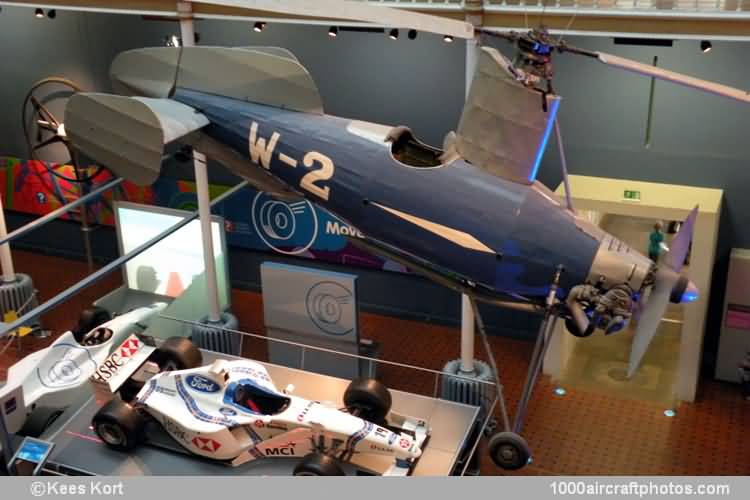06/30/2010. Remarks by Johan Visschedijk: "G. & J. Weir of Cathcart in Glasgow were an established engineering company, founded in 1871, which built aircraft during the First World War. The company then became involved in rotorcraft, initially carrying out experiments on their own account and subsequently becoming the backers of The Cierva Autogiro Co. Ltd.
The company was an important component of the Scottish Group of manufacturers, being engaged in substantial production of the Royal Aircraft Factory B.E.2, F.E.2b and R.E.7 series and the Airco D.H.9 during WW I. G. & J. Weir received contracts for 450 F.E.2b, 600 D.H.9 (200 of which were cancelled) and 100 R.E.7 (cancelled). 300 B.E.2 were group-built with G. & J. Weir, Alexander Stephen and the North British Locomotive Co. among the constructors.
100 F.E.2b aircraft were built in conjunction with Alexander Stephen, with a further 50 delivered as parts for assembly by Barclay, Curle & Co. An additional 150 F.E.2b are listed in British Military Aircraft Serials as 'group-built in Scotland', and it is very likely that G. & J. Weir had a part to play in the production of these aircraft.
The first Weir autogyro experiments were carried out on four autogyros, the Weir W-1 to W-4, from 1932 till 1937. The W-1 was flown in May 1933; the W-2 was flown in March 1934; and the W-3, which was flown by Alan Marsh at Abbotsinch on July 9, 1936. The W-4 was tested at Abbotsinch in December 1937, but could not be persuaded to become airborne. The W-2 and W-3 were also flown at Hanworth.
From 1937, these experiments were extended into the field of the helicopter, the company producing the first successful British helicopter to fly (if one discounts the experiments of Brennan at Farnborough, and the Mumford device described under William Denny & Bros Ltd at Dumbarton). This aircraft, the Weir W-5, was first flown on June 7, 1938, at Dalrymple, near Ayr. The Weir W-6 helicopter flew on October 27, 1939, flying for some eighty hours, before wartime priorities intruded. The W-6 was assembled at the Argus Foundry, Thornliebank, a few miles to the south of Cathcart.
Weir was also directly involved in the affairs of The Cierva Autogiro Co. Ltd, with C.G. Pullin of G. & J. Weir as managing director of Cierva, and J.G. Weir as chairman. Weir had a controlling financial interest in Cierva from 1939. The aircraft department moved to Mollart Engineering's premises in Thames Ditton in 1943, before the final move of The Cierva Autogiro Co. Ltd to Eastleigh in 1946.
The involvement of G. & J. Weir in the Cierva company is reflected in the latter company's products being designated W-9, W-11 Air Horse and W-14 Skeeter; the letter W standing for Weir, and the numerical sequence following on from Weir's own projects.
The single-seat W-2 experimental autogyro was an improved W-1, and first flew during March 1934 from Abbotsinch. It was powered by a Weir O-92 Dryad II flat two-cylinder, horizontally-opposed, air-cooled engine, developed from the Dryad motorcycle engine produced by the William Douglas Ltd. of Bristol, UK. After Douglas closed its doors in late 1932, the engine designers C.G. Pullin and G.E. Walker joined the Weir firm in 1933.
The W-2 incorporated an auxiliary drive shaft to spin up the rotor to reduce the take off run required. Due to stability problems, the tail surfaces of Weir's next autogyro, the W-3, were fitted to the W-2 and plans were afoot for production, which never materialized. Out of Weir's enterprising designs, the W-2 is the sole survivor, and was a part of the Science Museum collection for many years before being generously donated to the Museum of Flight by Viscount Weir as a unique part of Scotland's National Aviation collection in 1986."
